Discovering termites can be a shock in the best of times. Discovering them in winter can be even more surprising. Unfortunately, everyone’s least favorite wood-muncher doesn’t always subscribe to seasonal behaviors. So, are termites active in winter? And where do they go anyway?
You might expect termites to go dormant or die out in the winter. If only. Sadly, the truth is termites will remain active all winter long if they can. They survive primarily by finding a nice, warm climate to hole up in. If you’re not careful, it could be your nice, warm climate. Because termites don’t slow down, we don’t either. Here’s what you should know about winter termites and how to stop them.
Where Termites Go in the Winter
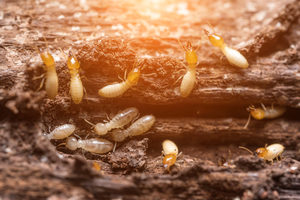
While it’s true that termites remain active during winter, that doesn’t mean they can survive the cold. As cold-blooded insects, termites depend on their environment to provide them with the heat they need to survive. When temperatures drop below freezing, termites will die out unless they find cover. It just so happens they’re very good at finding that cover.
Once termites have a place to survive, they can keep moving, eating, and expanding their colony like always. In the wild, subterranean termites survive by burrowing deeper into the ground. As temperatures decrease, so will their movements to the point that they may appear dead or motionless. In most cases they are still alive. Drywood termites on the other hand can burrow into wooden logs but once the temperatures drop below freezing, they will die off.
The most common termite in Michigan is the Eastern Subterranean Termite (Reticulitermes flavipes). When the ground freezes, these termites simply dig their tunnels deeper. Eventually, part of the colonies’ “territory” is located beneath the frost line. Most of the termites stay in these tunnels for their whole lives. Workers, however, move in and out to connect the colony to its food source: wood.
What Termites Do in Winter
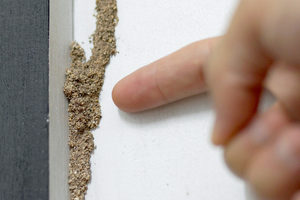
The same thing they always do – propagate! Of all the castes in a termite colony, only workers actually bore through wood. Worker termites dig through soil to expand the colony while simultaneously searching for food. When they find food, they eat through it, leaving behind hollowed-out tunnels. Termite workers carry the wood they eat back to the colony, where they use it to feed soldier and reproductive castes.
Over time, termites can significantly damage the wooden structures they feed on. Their continual feeding wears down the wood, and the tunnels they leave behind compromise its structural integrity. Meanwhile, reproductive termites continuously produce new workers to expand the colony. These workers will seek new food, and (of course) keep eating. The severity and range of termite-related wood damage will get worse and worse the longer an infestation lasts.
How Termites Enter Your Home
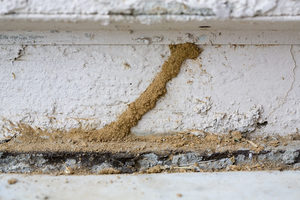
Termites infest homes by accessing wood from the outside, near their subterranean colonies. They locate vulnerable wood by building complex networks of branching tunnels underground until they run up against it. When they find wood, they become devoted to stripping it of its cellulose for the colonies’ food source.
Termites use this same principle for infesting homes all year, even during the winter. They overcome the cold weather challenge by creating “exploratory tubes” out of mud and fecal material. They use these tubes to essentially extend their shelter up from the ground toward food sources. Exploratory tubes allow termites to access wood that’s touching or near soil without ever having to expose themselves to freezing cold.
How to Stop Them
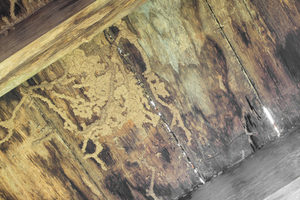
The only way termites could access your home is by reaching a wooden structure while staying warm. Termite tunnels enable them to reach out of their colonies, but they can’t reach far.
Remove or protect wooden structures that are near soil. Wherever possible, ensure that wood doesn’t come within 18 inches of soil. Remove any wooden debris near your home, like stacks of lumber, firewood, sticks, trellises, or wood chips. Replace damaged wooden materials with non-cellulose alternatives or pressure-tested lumber.
By depriving termites of a way to get food, you’ll go a long way toward keeping them out. Remember that termites need moisture to survive, too. They’re attracted to wood that’s wet, in a humid place, or near wet soil. Reduce humidity and moisture in vulnerable areas like basements by patching drafts, repairing leaks, and dehumidifying. Make sure your downspouts, gutters, and sump pump drain moisture away from the building properly. The less suitable you can make your home for termites, the less interested they’ll be in infesting it.
Early Warning Signs of Termites
Unfortunate as it is to admit, termites continue to be a threat even in the dead of winter. Keeping your home safe from them means remaining vigilant all year long. Fortunately, termites are not unstoppable. If you keep a close eye out and follow the steps outlined above, you can ensure that nothing snacks on your home this winter.
Watch for mud tubes, termite holes and other signs of termite damage. Discarded wings from flying termites looking to establish a new colony is another sign you may have an infestation.
It’s Always Termite Season in Michigan
Spring, summer, fall, winter–no matter when you need termite help, remember that you can always call on Griffin Pest Solutions. We know how to find termites, wipe them out, and keep them from coming back. Protecting your property will be our pleasure!


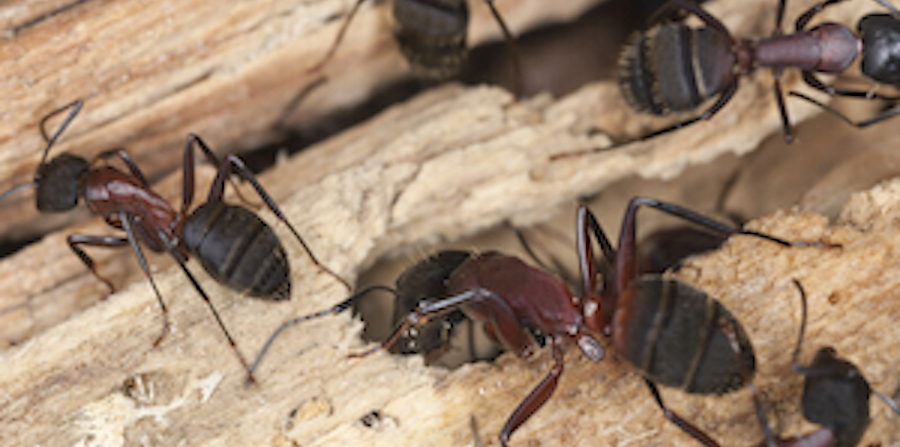
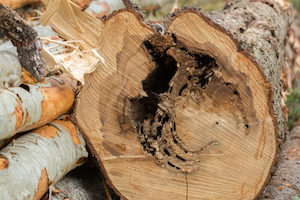
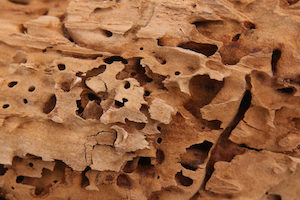
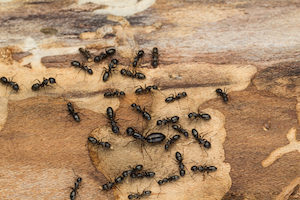
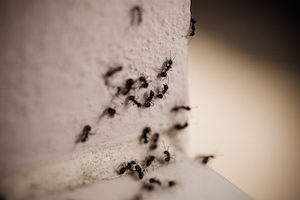
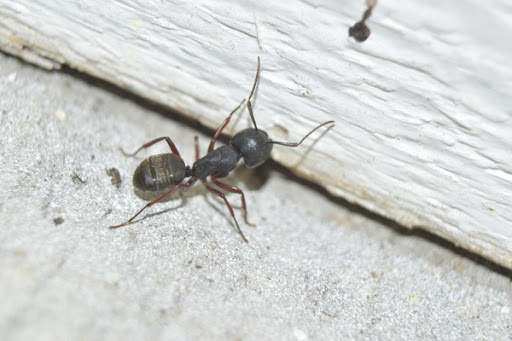
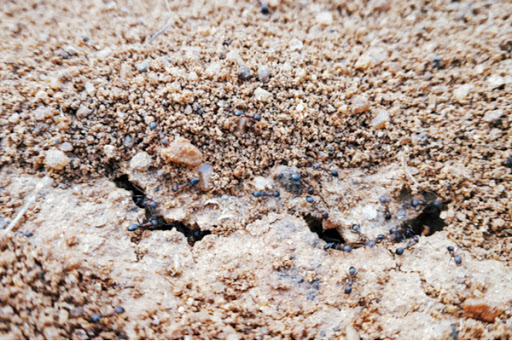
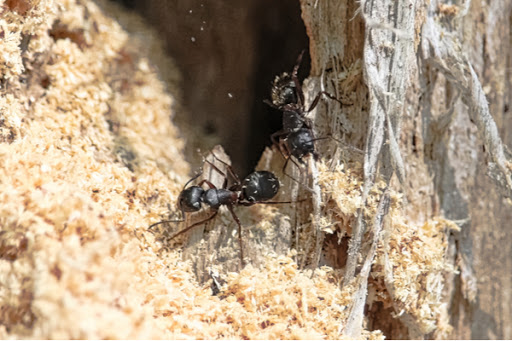
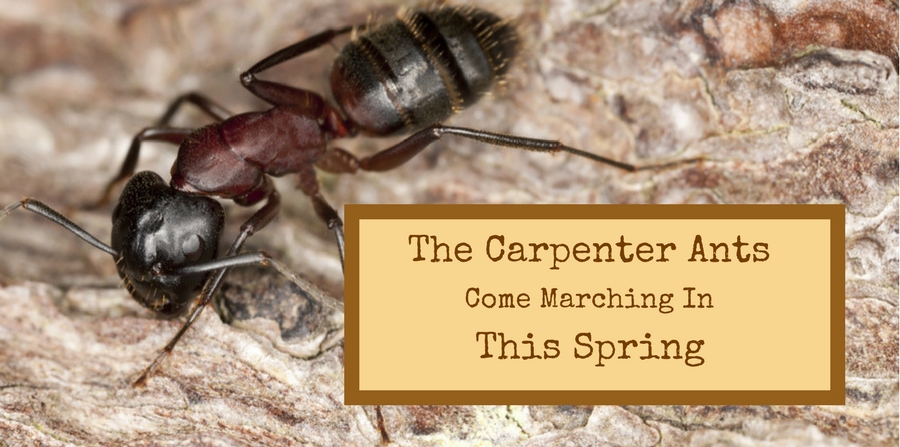
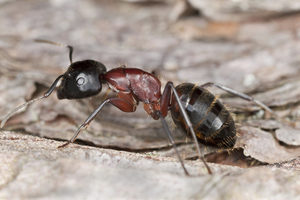 Carpenter ants look like their sugar or pavement ant cousins, except bigger and darker. They’re typically brown or black and
Carpenter ants look like their sugar or pavement ant cousins, except bigger and darker. They’re typically brown or black and 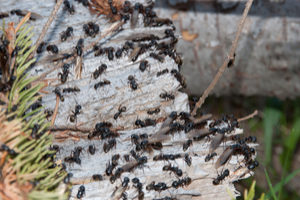 Carpenter ants re-emerge from winter dormancy to replenish their energy and mate. Drones and queens emerge first in late winter or early spring. The more numerous drones swarm in large groups while seeking queens during mating season. You may notice these swarms around your home as early as mid-March. After mating, carpenter ant queens look for likely places to establish new nests. If they find a good place inside your home, they’ll lay 15-20 fertilized eggs there. These eggs will hatch into workers, which will begin to build a new colony.
Carpenter ants re-emerge from winter dormancy to replenish their energy and mate. Drones and queens emerge first in late winter or early spring. The more numerous drones swarm in large groups while seeking queens during mating season. You may notice these swarms around your home as early as mid-March. After mating, carpenter ant queens look for likely places to establish new nests. If they find a good place inside your home, they’ll lay 15-20 fertilized eggs there. These eggs will hatch into workers, which will begin to build a new colony.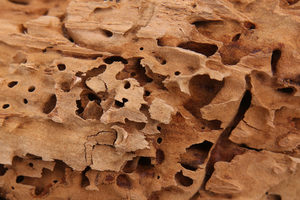 Unlike many varieties of ant, carpenter ants are not primarily motivated to infest homes by the food inside. Carpenter ants feed on protein and sugar, primarily by foraging for aphids, live and dead insects, and honeydew. Contrary to popular belief,
Unlike many varieties of ant, carpenter ants are not primarily motivated to infest homes by the food inside. Carpenter ants feed on protein and sugar, primarily by foraging for aphids, live and dead insects, and honeydew. Contrary to popular belief, 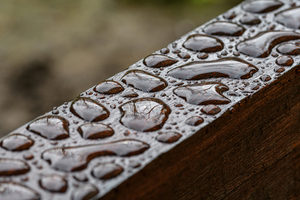 Preventing carpenter ants is
Preventing carpenter ants is 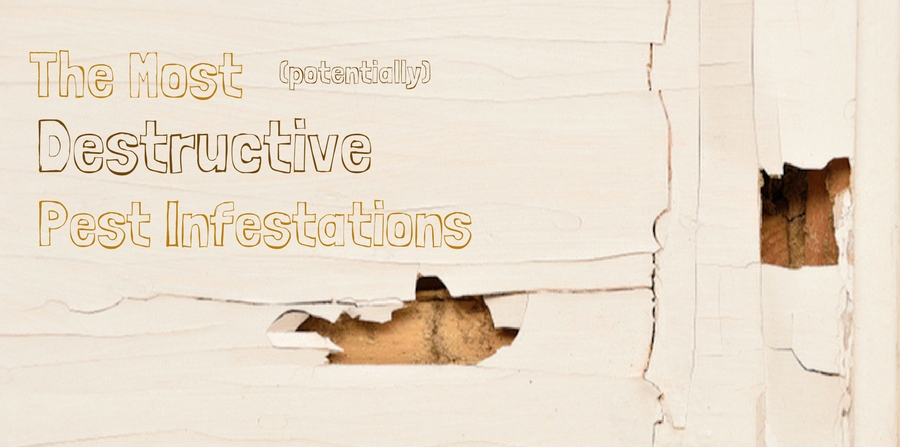
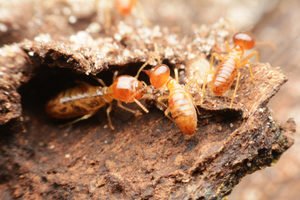 You knew
You knew 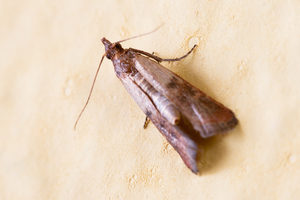 Pantry-infesting pests like the common
Pantry-infesting pests like the common 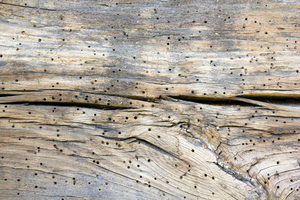 Powderpost beetles
Powderpost beetles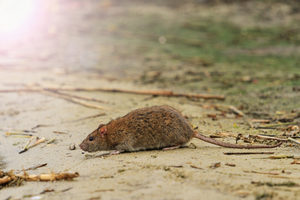 Yes, unfortunately, the extremely common mice and
Yes, unfortunately, the extremely common mice and 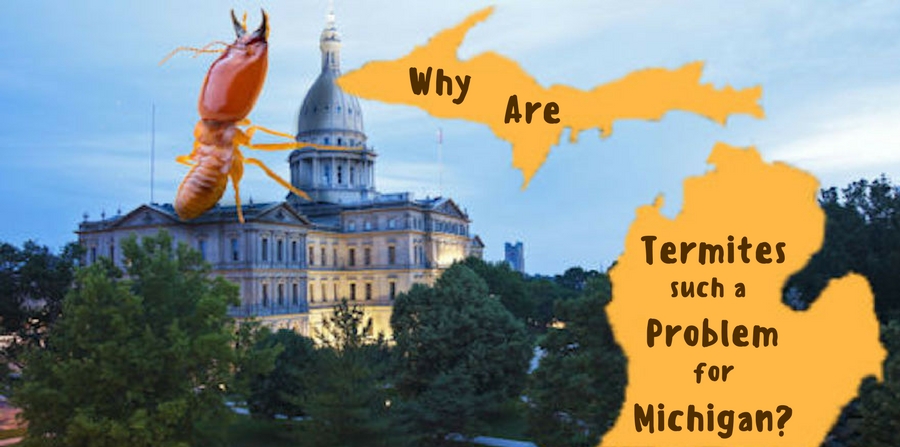
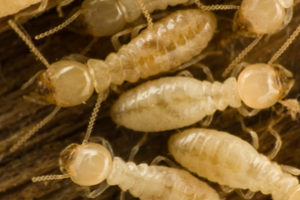 Termites are classified in the same insect order as cockroaches,
Termites are classified in the same insect order as cockroaches, 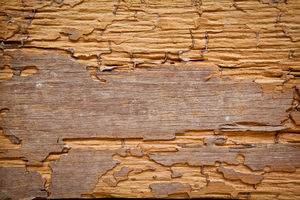 We don’t know for sure
We don’t know for sure 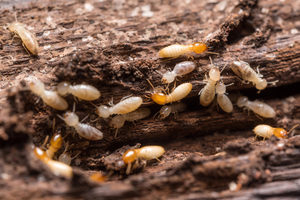 Termites feed on the
Termites feed on the 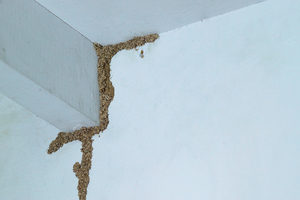 Termites infest wood that’s moist, damaged, or readily accessible. Keeping them out means making sure the wood in your home is none of those things. Start by looking for plumbing leaks, condensation, puddling, or excess humidity. Pay special attention to your basement, because most infestations start there. Find and patch up drafts, ensure proper ventilation, and
Termites infest wood that’s moist, damaged, or readily accessible. Keeping them out means making sure the wood in your home is none of those things. Start by looking for plumbing leaks, condensation, puddling, or excess humidity. Pay special attention to your basement, because most infestations start there. Find and patch up drafts, ensure proper ventilation, and